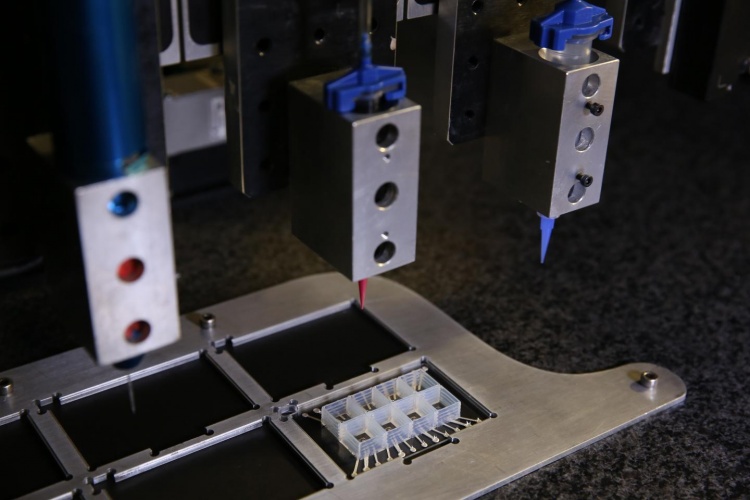Organs-on-chips mimic the function and structure of real organs. The technology is emerging as an innovative way to study biological processes and drug screening, as well as an alternative to animal testing. Currently these devices are built in clean rooms using lithography, an expensive technique that also makes it difficult to harvest data from the finished product.
The artificial heart, described in the journal Nature Materials, was made using a single continuous procedure, with six different custom inks integrating soft strain sensors into the micro-architecture of the tissue.
"This new programmable approach to building organs-on-chips not only allows us to easily change and customise the design of the system by integrating sensing, but also drastically simplifies data acquisition," said Johan Ulrik Lind, first author of the paper and postdoctoral fellow at the SEAS.

The chip contains multiple wells, each with separate tissues and integrated sensors, allowing researchers to study multiple engineered cardiac tissues at once. To test the device, the team performed drug studies and longer-term studies of gradual changes in the contractile stress of engineered cardiac tissues, which can occur over the course of several weeks.
"Researchers are often left working in the dark when it comes to gradual changes that occur during cardiac tissue development and maturation because there has been a lack of easy, non-invasive ways to measure the tissue functional performance," said Lind.
"These integrated sensors allow researchers to continuously collect data while tissues mature and improve their contractility. Similarly, they will enable studies of gradual effects of chronic exposure to toxins."




Red Bull makes hydrogen fuel cell play with AVL
Formula 1 is an anachronistic anomaly where its only cutting edge is in engine development. The rules prohibit any real innovation and there would be...